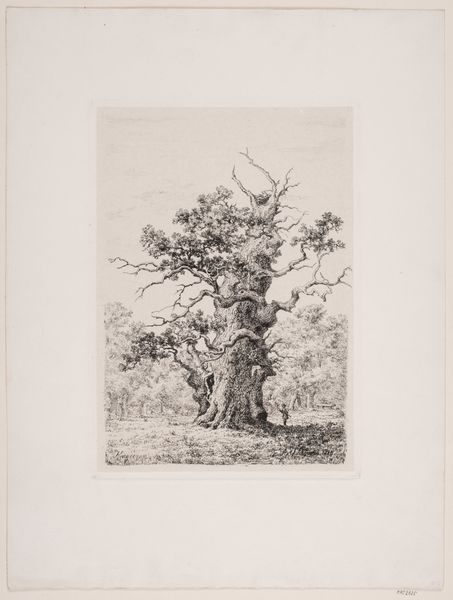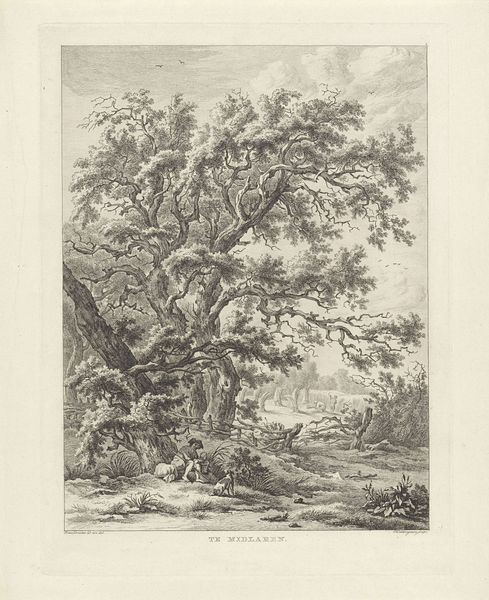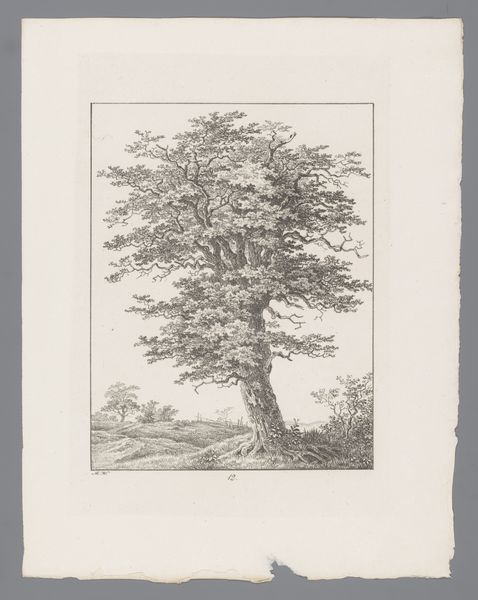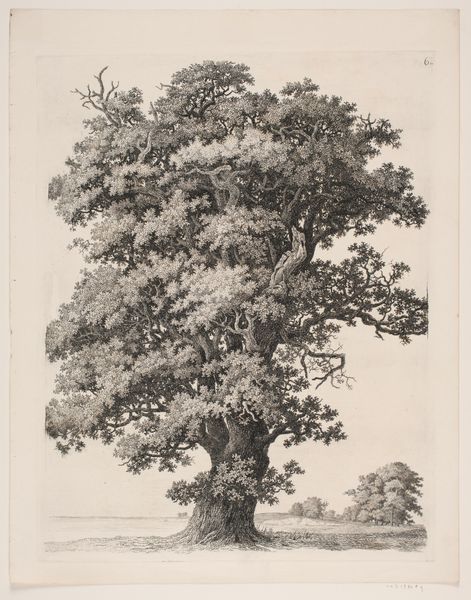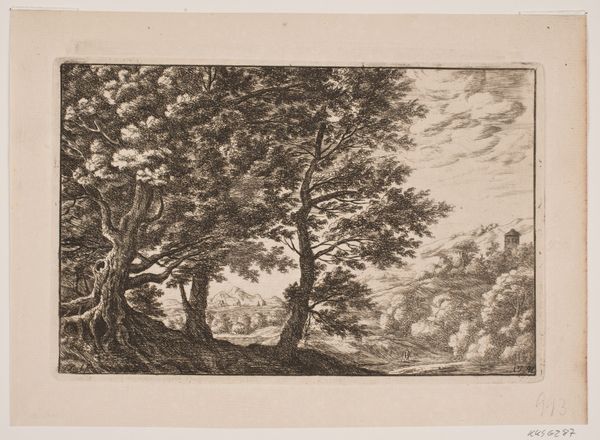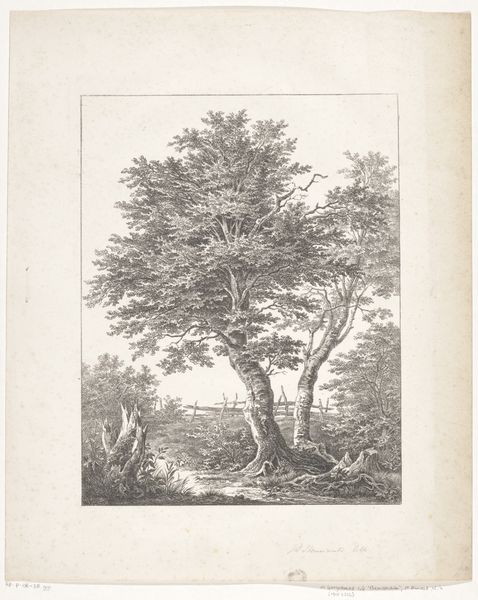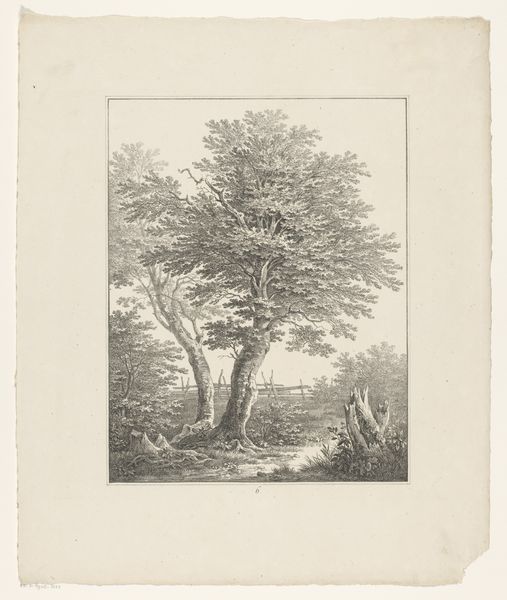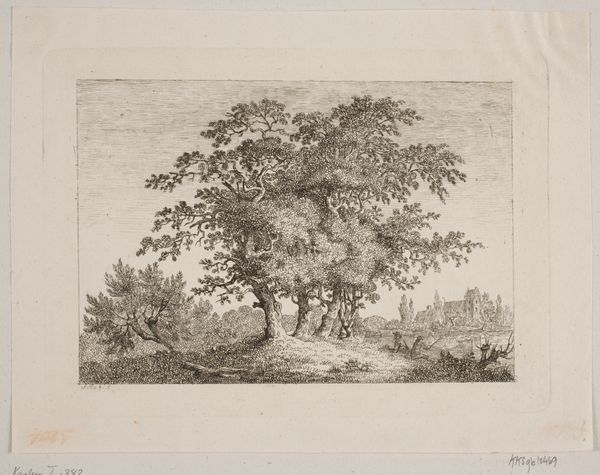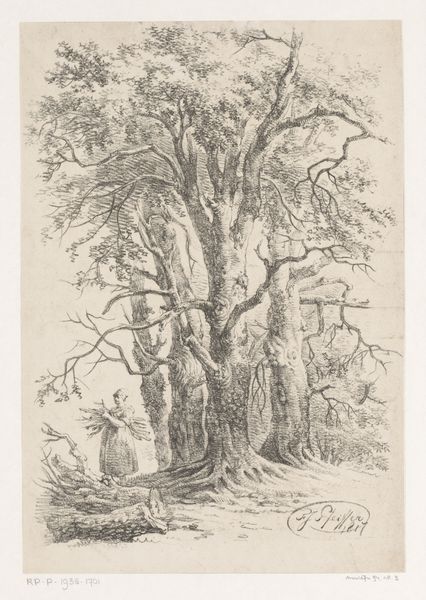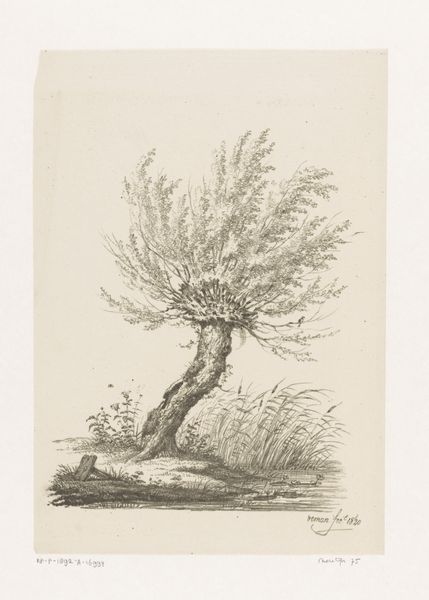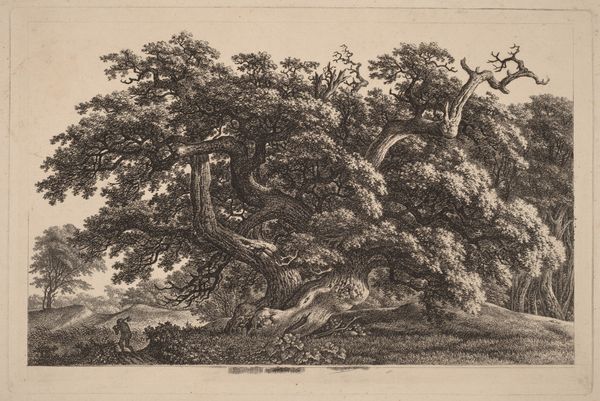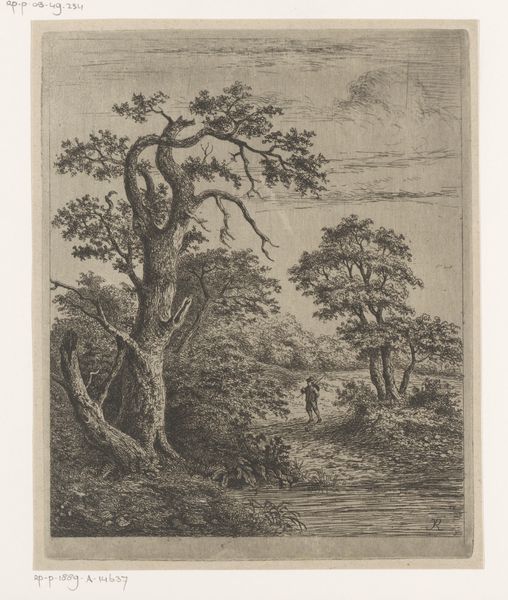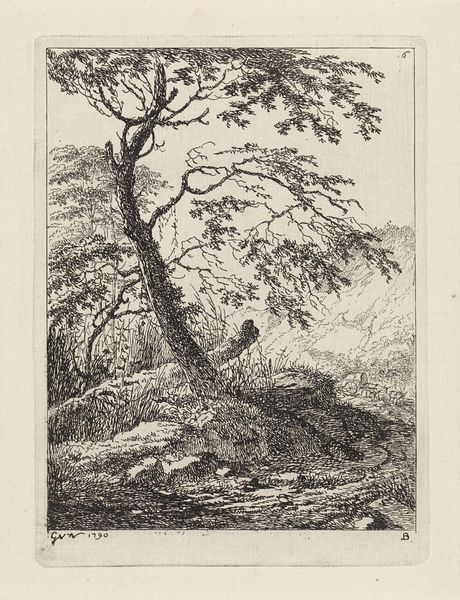
drawing, pen, engraving
#
pencil drawn
#
drawing
#
light pencil work
#
pen sketch
#
pencil sketch
#
landscape
#
pencil drawing
#
romanticism
#
pen-ink sketch
#
pen work
#
pen
#
pencil work
#
engraving
Dimensions: height 433 mm, width 373 mm
Copyright: Rijks Museum: Open Domain
Curator: Looking at "Landscape with Two Men Under a Large Tree" by Carl Wilhelm Kolbe, created around 1800 and held here at the Rijksmuseum, I’m struck by how… grounded it feels. The stark monochrome drawing creates a very particular atmosphere. Editor: Yes, "grounded" is an interesting word. To me, it's almost imposing, or maybe severe? The way the immense tree dominates the tiny figures… it speaks to a particular hierarchy of man vs. nature doesn't it? It feels intentionally weighty, from an era where nature was considered something of an untamed god. Curator: Precisely! Kolbe’s masterful use of pen and engraving to depict the texture of the bark and the intricate network of branches directs our focus to the artistic skill, doesn't it? We need to also consider how the labor of producing an engraving shaped its availability. It brings the romantic ideal of nature as sublime and awe-inspiring to a wider audience through reproducible image-making. It moves out of the drawing rooms of wealthy elites. Editor: Absolutely, that access is key! Kolbe’s background as a professor really highlights how his intention was to spread imagery and thought—consider also that the print market and artistic academies are becoming crucial institutions during this period. To that point, do you think the relative inexpensiveness, because it's a reproducible image, alters our appreciation of it versus a unique, hand-drawn landscape by Kolbe? Does the change of hands impact how it's used and how we respond? Curator: It undeniably shapes the perception and the use! These engravings become commodities, circulating within a society that is rapidly changing with new developments in mechanical production. Its availability changes the interaction between the art and its public! I appreciate how this landscape demonstrates the convergence of nature, labor, and emerging print economies in the early 19th century. Editor: And understanding the socio-political factors, these new markets, as the print gains distribution is key in grasping how landscape imagery played its part in society’s evolution at that period. It reveals much, both about artistic agency, about art's use as a historical object, and the cultural landscape itself. Curator: It has been quite a discovery to consider what Kolbe's image says about his techniques, distribution, and the early days of mass production of art. Editor: Yes, thinking through that social context, its effect on both production and perception, opens this small scene in entirely new ways.
Comments
No comments
Be the first to comment and join the conversation on the ultimate creative platform.
